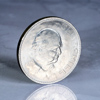| Ebooks! Ebooks! Read all about it! |
|
We recently launched our first ebooks! These are collections of Plus articles on particular themes that have intrigued, challenged and entertained our readers. You can download these for free from the Plus website in formats that work on most e-readers. The first two ebooks explore parallel universes and the maths of altruism.
|
| The Plus advent calendar 2013 |
|
Is it cold outside? Yes. Fire is warm? Yes. Snow on its way? Yes. Do we love Christmas? YES! Celebrate the countdown with the Plus advent calendar!
Starts Sunday!
The Plus advent calendar 2013
|
|
|
|
Information about information
|
|

What exactly is information? We use it, trade it, and are perhaps even made of it, but what key questions about information are mathematicians, physicists and philosophers currently thinking about? Find out more with our new project below, and tell us what questions you'd like answers to by voting in our online poll.
Vote now!
|
READ MORE
|

From 70 million to just 600...
This year has seen a flurry of results as mathematicians hunt down the elusive proof of the twin prime conjecture. Will they get their wish for Christmas this year?
|
READ MORE
|

Struggling with chance
A 1 in 14 million chance to win the lottery, a 5% risk of cancer, a 50:50 chance of heads on a coin — we deal with probabilities all the time, but do they actually mean anything?
Physical finance
The fact that a sizeable proportion of the financial workforce is made up of physicists is one of the industry's best-kept secrets. We talk to Laura Tadrowski, who has made the leap from physics to finance.
The life and numbers of Fibonacci
The Fibonacci sequence – 0, 1, 1, 2, 3, 5, 8, 13, ... – is one of the most famous pieces of mathematics. We see how these numbers appear in multiplying rabbits and bees, in the turns of sea shells and sunflower seeds, and how it all stemmed from a simple example in one of the most important books in Western mathematics.
|
READ MORE
|
|
Browse with Plus: Mathigon
|
|

Wow. Have you seen the wonders on offer in Mathigon? They have always been one of our favourite sites and now they offer a selection of beautiful interactive ebooks. The World of mathematics ebook is a spectacular tour through different areas of mathematics, including symmetry and groups, dimensions, sequences and functions, clearly explained and richly illustrated with images and animations. Alice in FractalLand is another favourite, taking you on a magical journey discovering fractals and more. Mathigon, written by maths student Philipp Legner, is a wonderful site that makes the very best use of web technology to convey the wonders of mathematics.
Take a look!
|
|
|
Physics in a minute: The Big Problem
|
|

Over the centuries physicists have whittled the fundamental forces of nature down to three: gravity, the electroweak force and the strong nuclear force. But there is a problem. Gravity is described by Einstein's general theory of relativity, which applies to the world at the scale of planets, stars and galaxies. The other two forces are negligible on such large scales. They come into play at the level of atoms and even smaller components of matter. This tiny world, in which gravity usually plays no part, is described by the other great theory to come out of the twentieth century: quantum mechanics.
Both theories do exceptionally well when they are tested against reality. But they are in conflict about the nature of space, or, as Einstein would have it, spacetime. When you combine the two theories you get mathematical results that make no physical sense: they imply that spacetime should tear itself apart. So the biggest challenge for twenty-first century physics is to come up with a unified theory of quantum gravity, which describes the world at all scales and retains the aspects of general relativity and quantum mechanics that work so well. The strongest contenders for such a theory are string theory and loop quantum gravity. But neither of the two can be tested in the lab, or will become testable any time soon — so the holiest grail of modern physics remains elusive.
You can find out more in our articles on quantum gravity, quantum mechanics and relativity.
|
|
If you have any comments on this newsletter, or Plus Magazine, please contact us at [log in to unmask] - we are always happy to hear from our readers!
Feel free to forward this email to anyone you think might be interested.
Happy reading!
|
